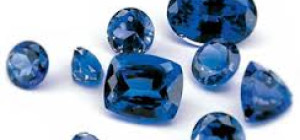Opals stand out for featuring a magnificent array of shiny hues, complete with iridescent flashes that capture the eye when they are seen from different angles. The beauty of these superb gems is that each stone is unique. If you're looking to buy opal jewellery, the following guide will give you some key information to keep in mind so that you can be sure to make the best choice possible.
Important Facts about Opal Gemstones
Opals diffract light wonderfully and boast a varying display of opalescent colours. They range from clear and white to a broad spectrum of hues, including red, orange, yellow, green, blue, magenta, rose, brown, grey and black.
Those with red against black are considered the rarest, while white and green mono-tone opals are the most common. When used in jewellery, their natural colour is often enhanced beautifully by layering he gem over a darker stone such as basalt.
Common opals are so named because they are mono-tone, although they would still be a beautiful buy.
In contrast, Precious opals reveal a superb play of different colours, while common opals are more mono-tone. The black variety is the most prized and features a dark blue, dark green or black background with a magnificent play of colour. The next most valued in this category is the white variety - it has a light body colour such as white or cream, on which dances a dazzling spectrum of colour. Fire opal is also highly valuable. It is transparent to translucent with a deep orange to red hue.
Australia produces 97% of the world’s supply of opals and unsurprisingly is the country's national gemstone. The southern part of Australia alone supplies approximately 80% of the global stock, particularly the black and white varieties. Furthermore, Brazil is renowned for quality white opal, while Mexico produces Fire opal. Other important sources of opal are Ethiopia, Hungary, Honduras, the United States (Nevada, Oregon, California, Idaho) and the Sudan.
 Opal Jewellery Buying Tips
Opal Jewellery Buying Tips
- Beware of synthetic opals - these are fused together to form beautiful imitations of the genuine article, but since they're made from plastic they are easily scratched and quickly lose their lustre.
- The primary evaluation of an opal is determined by its colour intensity and distribution of iridescent flashes (opalescence), with the finest specimens reaching higher prices than eve diamonds.High quality opal is rather rare in fact.
- Australian sedimentary opal is more stable and durable than opals from other countries.
- Like many natural gemstones, opals tend to have minor inclusions (minute inner cracks) inside their structure. Nevertheless, these inclusions will not be visible to the naked eye in good quality opals will not have inclusions that can easily be seen with the naked eye.
- Beware of buying opal jewellery with inclusions in the gem that are very visible, as these could cause the stone to break if you accidentally give it a knock, which is particularly a risk if you're wearing opal rings or bracelets.
- Volcanic opals are prone to cracking and discoloration over time, so while beautiful in appearance and inexpensive, they are not a good buy for use in jewellery.
Believed Health Benefits of Opals
The ancient Greeks believed that opals guarded the wearer from disease. Opals are also thought to preserve life and strengthen the will to live. What's more, many believe that opals improve health by stimulating the glands as well as regulating metabolism, while they are also thought to bring peace of mind.
If you've decided to buy opal jewellery, the above guide gives you the key facts along with things to avoid so that you can be sure of owning a good quality item that will stand the test of time.
Shared by thejewellerychannel.tv.







